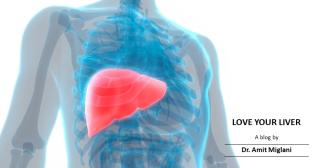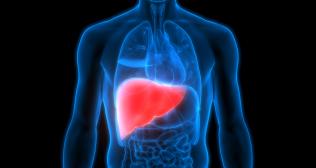
Best Endoscopy Hospital in Mumbai
Best Endoscopy Hospital in Mumbai
Endoscopy is a procedure where your doctor uses a specialised tube-like instrument called an endoscope to examine organs and structures inside your body in detail. Endoscopic procedures are used to screen, diagnose, and treat a wide range of conditions. Fortis Hospital, Mulund, offers comprehensive range of endoscopic services, including advanced procedures such as endoscopic ultrasound (EUS) and endoscopic retrograde cholangiopancreatography (ERCP). Our specialists, who are highly skilled in performing minimally invasive endoscopic procedures, utilise cutting-edge technology to achieve excellent outcomes.
This article provides a brief overview of endoscopy, including the procedure, the different types and why and how they are used for, side effects, any potential risks and complications.
What is an endoscopy?
An endoscopy is a medical procedure in which your doctor inserts an endoscope, a thin, flexible tube with a light and a special camera at the tip, directly into your body through your mouth, anus, or a small incision in your skin. This procedure enables your doctor to see detailed images or videos of your internal organs (such as the gastrointestinal tract) or other body parts, which are captured by the scope and displayed on a screen.
How is an endoscopy performed and how long does it last?
Before an endoscopy, your doctor will perform a physical examination and review your complete medical history. Based on the type of endoscopic procedure, your doctor will give instructions, including when to stop eating or drinking before your endoscopy. Discuss with your doctor about any medications or supplements you’re taking, or if you smoke.
Just before you have an endoscopy, you will likely be administered a sedative to help you relax and reduce discomfort throughout the procedure. In very complex procedures, general anaesthesia may be given to put patients to sleep for a certain period, so they don’t feel pain.
Once you’re asleep or in a completely relaxed state, your doctor will carefully insert the endoscope through a natural opening and examine the targeted area to make a diagnosis or take a tissue sample (biopsy) for microscopic analysis. During an endoscopic procedure, your doctor may also perform surgery to remove a stone or place a stent across an obstructing tumour. At the end of the procedure, they will remove the scope and close any incisions they’ve made.
Most endoscopies take about 30 minutes to two hours, although the duration will depend on the type of procedure you have.
After the procedure, you’ll be monitored in a recovery room for an hour or so until the effects of sedative or anaesthesia have worn off. This means, your family members can take you home the same day. your doctor will discuss the findings with you either on the same day or after a few days/weeks, depending on how soon you receive the results.
Your doctor or care team will provide detailed aftercare instructions - diet, medications, wound care (if any incision is involved), activity restrictions, any unusual symptoms, follow-up appointments, etc.
Why do you need an endoscopy?
Your doctor may recommend an endoscopic procedure for various reasons, including:
Investigation - to determine the cause of any abnormal symptoms you’re having.
Diagnosis - to remove a small sample of tissue (biopsy) or confirm a diagnosis of cancer or other diseases.
Treatment – to seal wounds, or assist doctors in visualising the inside of the body during a surgical procedure such as removing gallstones or tumours, etc.
What diseases can be detected by an endoscopy?
Doctors use endoscopy to detect various conditions such as:
- Gastrointestinal diseases
- Colon polyps
- Colon cancer
- Arthritis
- Brain tumours
- Swallowing disorders
- Laryngitis
- Lung conditions
- Kidney stones
- Urinary tract infections
- Abnormal uterine bleeding
- Endometriosis
- Fertility issues
Doctors also use endoscopy to perform surgeries or treat certain illnesses directly.
What are the types of endoscopy and why are they performed?
There are different types of endoscopy, each with its specific name based on the part of the body that needs to be investigated. Some of the common types of endoscopy include:
- Arthroscopy – the scope is inserted through a small incision above your joint (such as your shoulder, knee, ankle or hip) to visualise and treat conditions like arthritis.
- Bronchoscopy – the scope is inserted through either the mouth or the nostril to look at your airways or lungs.
- Colonoscopy – the scope is inserted through your anus to examine your colon or large intestine.
- Cystoscopy – the scope is inserted through your urethra to look at your bladder.
- Hysteroscopy – the scope is inserted through your vagina and cervix to look at your uterus.
- Enteroscopy – the scope is inserted through your mouth or anus to see your small intestine.
- Laparoscopy – the scope is inserted through a small cut in your abdomen, usually near your navel, to look inside your abdomen and pelvis.
- Upper endoscopy – Also known as gastroscopy, or esophagogastroduodenoscopy, the scope is inserted through your mouth to look at the inner lining of your oesophagus, stomach, and upper intestinal tract.
Endoscopy, like most medical technologies, is continually evolving, making the procedure even less invasive. For instance, advanced endoscopy techniques such as capsule endoscopy may be used when other methods are inconclusive. For a capsule endoscopy, you’ll swallow a small pill with a tiny camera inside, allowing your doctor to visualise your digestive tract without a scope.
Sometimes, doctors may use endoscopy in combination with an ultrasound, known as endoscopic ultrasound (EUS), to examine your digestive tract and surrounding organs up close when a regular endoscopic procedure cannot provide a clear view.
What are the possible side effects and risks of an endoscopy?
You may experience some uncomfortable symptoms such as, a sore throat, bloating, nausea, and cramping. These side effects typically resolve in a couple of days.
Endoscopic procedures are generally considered safe, but, as with any medical procedure, it has some potential risks and complications, though rare.These include:
- Bleeding
- Infections
- A sore throat gets worse
- Tearing of the gastrointestinal tract
- An adverse reaction to sedation or anaesthesia
- Extreme pain at the incision site
- Fever
- Chest pain
- Shortness of breath or trouble breathing
Seek immediate medical help if you notice any of these symptoms or anything that concerns you.
Takeaways
Endoscopies are a common, minimally invasive procedure used to examine the inside of the body. Doctors perform these procedures to investigate, diagnose, and, in some cases, treat conditions by passing a long, thin tube (with a small camera and light attached) into your body through a natural opening or a small cut. Endoscopies are considered safe and not painful, although you may feel some pressure or discomfort during the procedure. Consult with your doctor if you experience any concerning symptoms or side effects.
Categories
Clear allMeet the doctor

- Gastroenterology and Hepatobiliary Sciences | Gastroenterology | Gastroenterology and Hepatobiliary Sciences
-
31 Years
-
3000



















